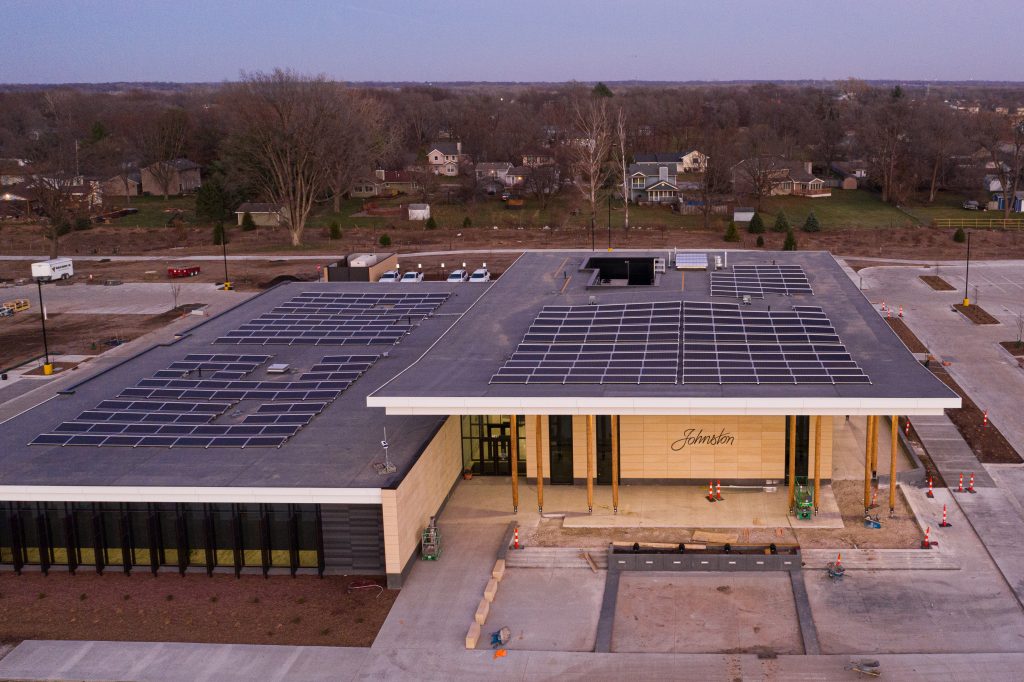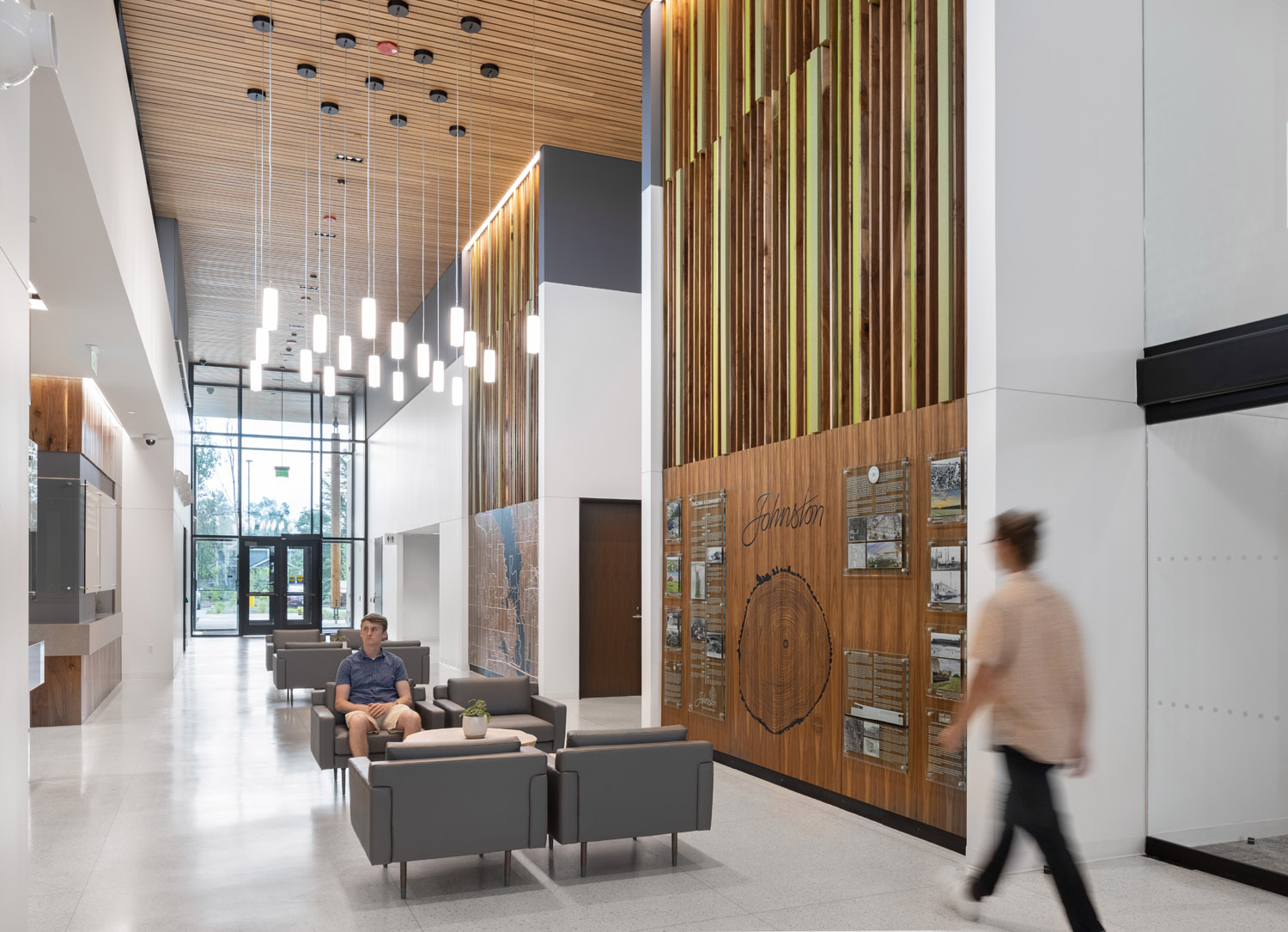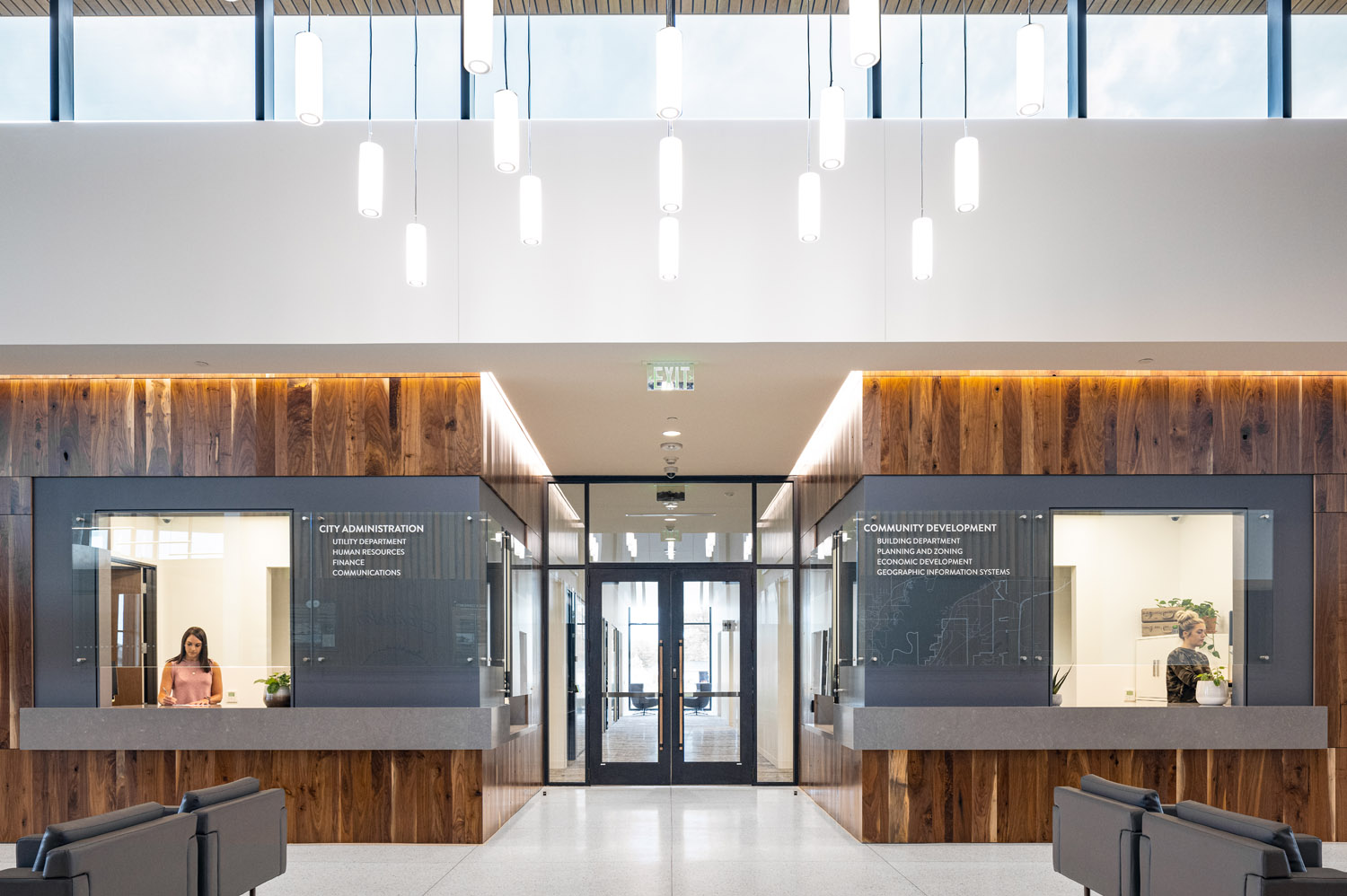Johnston Town Center & City Hall

-
ClientCity of Johnston
-
SQ. FT.22,853
-
Budget$9,328,000
-
Market
-
LeedTargeting LEED Silver
-
Year2020

- 2024 · American Institute of Architects, Iowa ChapterHonor Award
- 2024 · International Interior Design Association, Great Plains ChapterInterior Design Excellence Award
- 2024 · American Institute of Architecture, Iowa ChapterImpact Award - Merit
- 2022 · Engineering News-Record MidwestBest Project, Government/Public Building
- 2021 · Masonry Institute of IowaAppreciation Award
The first step in creating a walkable, mixed-use town center with a cohesive small town feel.
This new city hall is situated as the civic core of a new town center development in a growing mid-western suburb. The new facility combines municipal office functions with community spaces inside and out.
The buildings’ cross-axial layout features a central lobby that connects interior community spaces such as the council chambers, training room, and conference rooms to the municipal offices, both open and private.
Materials inside and out reflect the city hall’s purpose, while also representing the community and site specifically. Limestone, wood, and metal on the exterior imbue civic permanence while emphasizing the building’s warmth and openness. This same palette carries through to the interior to clarify the building’s organization and reinforce the interior/exterior connection.
The architecture and scale of elements reflect the city’s early formation around a railroad station. Exterior double columns, for example, are organized around the historic railway system and the width of railroad components. Walnut, oak and ash trees cleared from the site were used to construct the reception desk, council dias, lobby walls, workstations, and interior signage.
The building was designed as an example for the community – to drive innovation, conserve energy, and utilize sustainable materials. Both the building and the site support community growth and expansion with flexibility to accommodate evolving needs. Spaces such as the large “front porch” of the city hall can host various types and sizes of events and is surrounded by site amenities such as a splash pad, a skating rink, a bicycle pump track and large open green spaces. The building becomes a backdrop for a site that acts as a front yard for the community, serving as a forum, plaza, amphitheater, market and events space to welcome and support its community.
OPN was creative but practical in addressing the City Council’s design aspirations while staying within the defined financial constraints of the project. The final product is reflective of the staff needs for workspaces including the evolving needs brought about by Covid-19, while beautifully blending the City Hall into the overall Town Center vision. I greatly appreciated the team’s accessibility and responsiveness to meeting tight deadlines. I offer my highest recommendation regarding the OPN team.”
– Adam Plagge, Economic Development Manager, City of Johnston
EXPLORE
SUSTAINABILITY
Johnston City Hall is designed to conserve energy, make better building material choices, and drive innovation within the community. The project team utilized energy modeling software and sustainable strategies throughout design to ensure that the project is on target.
“We want to do what is best for our community and show that Johnston does it right”
Johnston City Hall is targeting LEED Silver with Net Zero aspirations. Building efficiency is maximized through the building’s shape, orientation and solar shading. Selected Sustainable Strategies include:
- Partnership with 1Source Solar to install 478 solar modules, creating a 184kW solar array on City Hall roof to provide most or all of City Hall electrical power needs
- Daylighting and views to the exterior prioritized throughout the building, and building massing and shading devices have been implemented to reduce cooling loads
- High efficiency lighting, water fixtures and mechanical systems are utilized throughout.
On the interior, material selection and reuse add to the character and quality of the space. The project team surveyed and mapped trees on site in order to keep as many as possible. Trees that had to be removed were harvested and are being utilized in key public-facing elements in the building including re-use at the reception desk, lobby walls, work stations and interior signage.












 Discover More
Discover More

